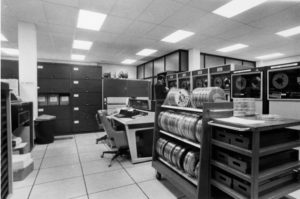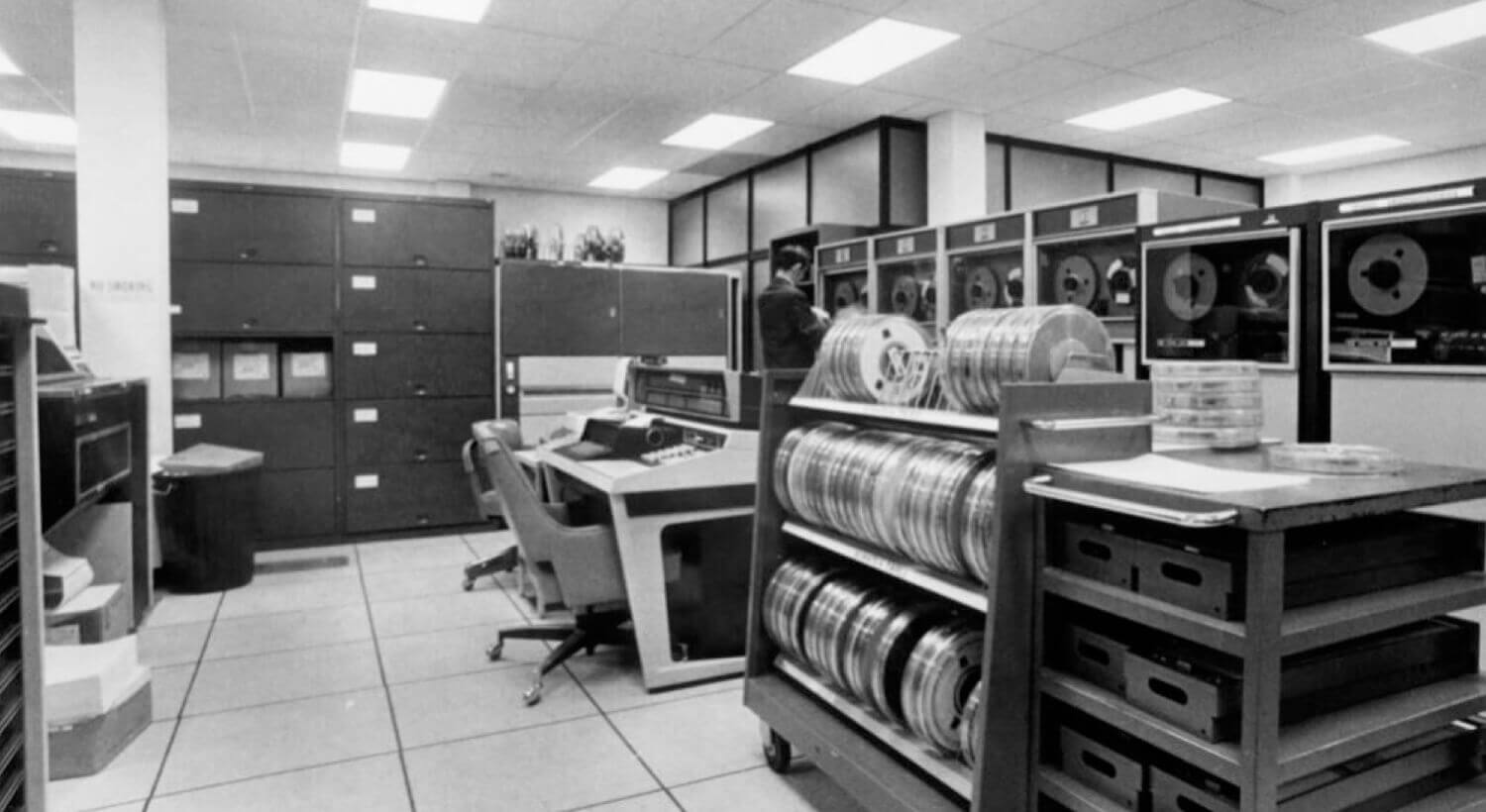
WHEN COMPUTING WAS YOUNG
Arkansas’ technology roots go deeper than you might think
John Chamberlin,
Past President, Arkansas Academy of Computing
THE TECH WORLD moves so fast today that sometimes it’s hard to remember what that world looked like yesterday, much less the day before that. But as someone who’s had a long, “braided” career in business and tech in Arkansas, especially in the financial area, I believe it’s important to remember how we got to where we are. That’s why one of my current pet projects is working with the Arkansas Academy of Computing and others to find and tell the stories that we loosely lump into the category of “Arkansas Computing History.”
One of my favorites involves online tools for education and computers for disease tracking, which, on the surface, sounds like the COVID world of 2020. But this story began in Arkansas more than half a century ago, and is about an innovative early national database that established our state as a pioneer in both data science and educational technology.
In the mid-1960s, the U.S. Congress recognized a serious set of problems with the education of migrant children. Entire families moved around the country working to cultivate and harvest crops from state to state. The children in these families were legally required to attend school, but their education was regularly disrupted following the crop work when their families moved on to the next job. These children attended many schools in a single year.
To improve education for these students, in 1966 Congress passed the Migrant Education Program (MEP) as part of Title I to provide supplemental and supportive services for migrant children. Some of these services involved educational and health records. Because these students moved so frequently, when they got to a new school it was often difficult to place them correctly in new classes because they seldom had their records from prior schools they’d attended. Such educational guesswork created lost learning opportunities for many migrant students. Health records were also a problem. There were reports of some migrant children having “callused arms” from repeated vaccinations that had been administered out of caution because the children couldn’t present up-to-date health records. The MEP authorized funds for a record-keeping system to address both of these needs.
After reviewing proposals from California, Florida, Colorado, and other states, the administrators selected Arkansas as the home of the “Migrant Student Record Transfer System.” The contract was awarded to the Arkansas Department of Education, which subcontracted the data processing to the computer center of the University of Arkansas Medical Center—now UAMS.
At that time, the Medical Center had one of the largest computers in the state—a CDC 3300 with 81,000 24-bit words of memory, two disk storage units (one of 175 MB and the other of 839 MB), six tape drives, and two printers, each of which was capable of printing 1200 lines per minute. This system would store records for hundreds of thousands of migrant students and was coupled with a CDC 1700 message-handling unit capable of handling 150-300 teletype terminals in the continental U.S. and some territories. Each terminal location had a dedicated phone line connecting it to the central system based in Little Rock.
Developing and supporting the system were 10 programmer analysts and an operations staff of 30 people who kept the system up 24/7. This was a large endeavor with leading edge technology. For comparison, the ARPANET, ancestor of the Internet, connected fewer than 10 locations at this time. The administrator of MSRTS was the late Winford “Joe” Miller, and the technical leader was Jerry Blackburn, both of whom were inducted into the Arkansas Academy of Computing. Jerry contributed his knowledge and archive to this article.
It was assumed that each student might attend four or more schools in a year, and the data on each child included subject placement information, standard test scores, and vaccination and health details. This information completely filled a preprinted form 132 characters wide and 66 lines deep. Each student and their school had a copy of this printed form.
If a migrant student enrolled at a school and did not have a form, the school took down the data available, sent it to the nearest terminal location, and the data was entered, transmitted, and the student added to the database—or updated if they had a record but had lost the form. If the student did have a form, the school added new data and the update was transmitted. The teletype terminals produced a punched paper tape which was then fed through a reader and transmitted.
The system ran smoothly and fulfilled the initial objectives of ensuring that these migrant students were able to get the most from the educational system, in spite of the frequent relocations of their families. Once this system was in place, educators saw measurable improvement in graduation rates among migrant students.
Data, always valuable, is often useful in situations beyond the original purpose. MSRTS proved very helpful in health emergencies as well. In one case, a 10-year-old girl was tested for tuberculosis but had moved on by the time the test results were available, indicating that she had a very serious, even life threatening, case of TB. The request for her current location was sent to MSRTS and she was found within five hours. Newspaper articles at the time credited the system with saving her life, as well as preventing the spread of the disease.
In another case, residents at a migrant labor camp in Florida were exposed to typhoid fever, including 232 students. Using the data in MSRTS, more than 200 of the students were located almost immediately, and the remaining 25 in the days that followed. Keeping this data on students was obviously useful, but there were also privacy concerns, and policies were established to control access to the personal information, foreshadowing current concerns.
MSRTS continued in operation for more than 25 years, into the age of the Internet and the personal computer. In the 1970s, the system was moved to a separate data center in the National Old Line Building across from the Arkansas Capitol. At this time, the system was converted to an IBM mainframe computer and technology upgrades were made. During the conversion, some of the work was done under contract by programmers from Systematics, Inc., including Prakash Jalihal—another Arkansas Academy of Computing inductee—linking the Arkansas efforts in educational technology with parallel development in financial technology.
Arkansas continued with innovation in educational technology linked to programs at the Arkansas Department of Education. These include IMPAC Learning Systems (ILS), which put educational computers into Arkansas classrooms, and the EAST Initiative, which focused on project-based learning using technology to meet community needs. The connection extends further through Governor Asa Hutchinson’s ongoing Computer Science Initiative. Administrative and technical experience link these efforts into a 50+ year history of computing in the service of Arkansas education.
———————
Editor’s Note: The links between EdTech and FinTech in Arkansas are strong. Systematics programmers worked on the IBM version of MSRTS, as mentioned above. When IMPAC Learning Systems (ILS) was founded under Governor Clinton, Walter Smiley of Systematics raised funds, chaired the board, and led ILS in contracting for software development, which produced a stream of royalty payments to ILS, diversifying its budget. Later, John Chamberlin of Arkansas Systems—author of the above history—was on the ILS board when operations ceased, and he helped ensure that the royalties were put into an IMPAC endowment that continues the mission of using technology to advance education in Arkansas. Prakash Jalihal and others from Systematics and its successor, FIS, have been an almost constant presence on the EAST Initiative board, and John Chamberlin has also served on that board. James Hendren of Arkansas Systems chaired Governor Hutchinson’s Computer Science Initiative.


